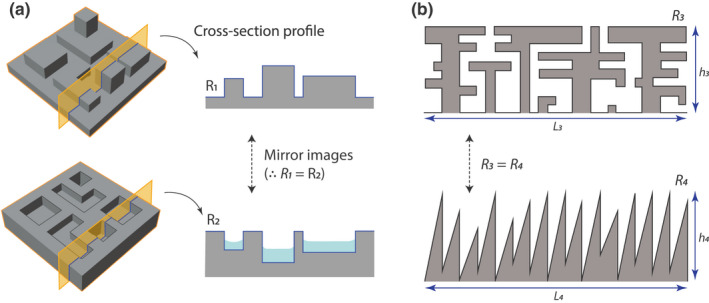FIGURE 7.

Illustrations of the limitations of rugosity as a complexity metric in ecology. (a) Two hypothetical surfaces with identical surface area and values but different geometrical features (i.e. ‘component types’), with different consequences for biodiversity. In an intertidal context, for example, the bottom surface will retain more water during low tide and provide refugia for a variety of benthic species. Analogous examples could be constructed for other systems, for example, macroscopic terrestrial landscapes where peaks and valleys of different altitudes provide habitats for different species. (b) Two hypothetical 1D profiles with identical values, linear extents () and heights () but different geometrical features: the top profile has overhangs and interstitial spaces and is arguably more complex, and may harbour a greater diversity of species.
